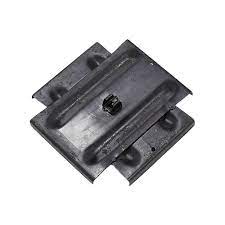
Cross plate anchor is a specific anchor used to support guy wires that support the poles on transmission lines. The guy wires provide extra stability and prevent the poles from bending or breaking. The cross-plate anchors are hence used at the base of these guy wires to provide a secure attachment point to the ground. A cross plate anchor consists of a large metal plate with several holes for attaching the guy wire. The plate is normally buried underground where the guy wire is then attached using methods like threading. The wire threads through the holes and securing it with the clamps or bolts. The design of the cross-plate anchors allows them to distribute the tension forces from the guy wire over a large area of soil. This provides stability and prevents the wire from pulling out of the ground.
Components of the plate anchor
Components and designs of the cross-plate anchor vary depending on the soil conditions, load requirements and regional standards. The components of the cross-plate anchor work together to provide stability and security in load distribution. The following are the common components of the cross-plate anchor.
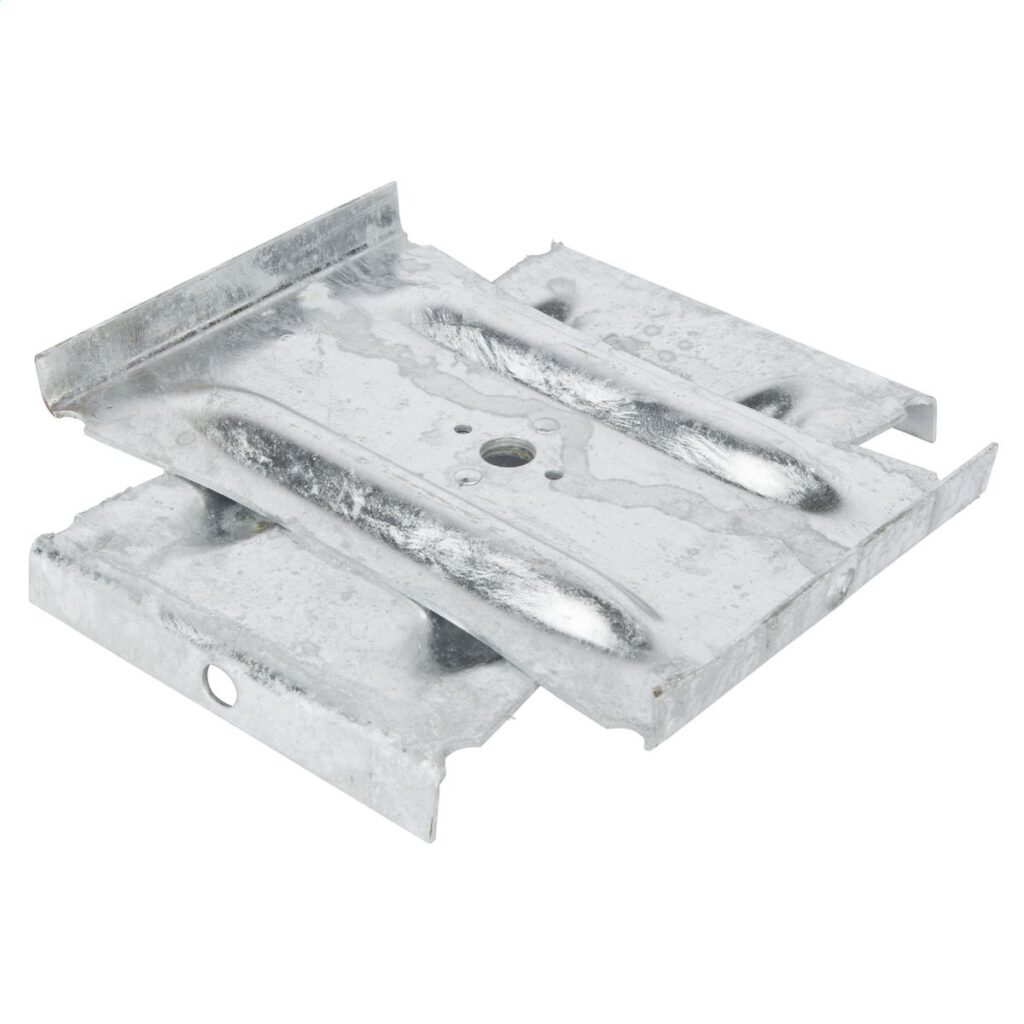
- Plate – the anchor plate is a large metal plate with multiple holes for attaching the guy wire made of steel or a durable material.
- Holes – the anchor plate has several holes positioned to accommodate the attachment of the guy wire. The holes are round, elongated or slotted depending on the specific anchor design.
- Shaft – the anchor attaches to a shaft or rod that extends into the ground vertically to provide stability and secure the anchor.
- Blades – some of the cross-plate anchors have blades that help them provide resistance against the uplift forces. The blades dig into the soil to increase the anchors holding capacity.
- Fastening hardware – the anchor plate connects using other hardware like clamps, bolts or other types of fasteners. They help to secure the guy wire to the plate and ensure a strong connection.
Types of cross plate anchors
There are various types of cross plate designed to accommodate different soil conditions and load requirements. Below are some common types used on the overhead transmission lines.
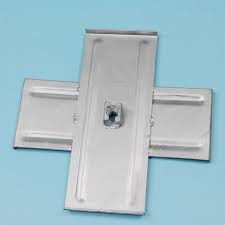
- Single-helix anchor – this type consists of a single helical blade attached to the central shaft. It drives to the ground thus providing stability and resistance against uplift forces. It is mostly used in softer soils or areas with less demanding load requirements.
- Multiple-helix anchor – the multiple-helix anchor has two or more helical blades attached to the central shaft to increase the holding capacity of the anchor. This provides greater stability in a wider range of soil conditions like medium to firm soils.
- Arrowhead anchor – arrowhead anchors have a triangular shaped plate with multiple holes for attaching the guy wire. It helps distribute the tension forces and provides stability.
- Duckbill anchors – these are also known as percussion-driven anchors which have a concave anchor plate. They drive to the ground using impact force where the plate opens up upon insertion. This also creates resistance against pullout forces. They are mostly used on rocky or hard soil conditions.
- Deadman anchor – deadman anchors are larger and heavier anchors used in challenging soil conditions or areas with high load capacity. They have a large plate buried horizontally in the ground while the guy wire attaches to one end of the plate. They provide substantial resistance and are commonly used in critical transmission line installations.
Applications of cross plate anchors
There are various applications of the cross-plate anchors used depending on the design, type of soil and the load requirements. The versatility and reliability of cross plate anchors make them a popular choice in various industries. The following are the common applications of the cross-plate anchors.
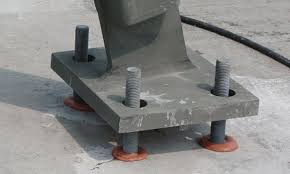
- Overhead transmission lines – ross plate anchors help to provide stability and support to the guy wires. This helps prevent the towers and poles from bending or breaking under the weight of the transmission lines.
- Telecommunication towers – the anchors work in the construction and installation of the telecommunication towers.
- Antenna towers – cross plate work in the construction of antenna towers to provide stability to the towers. They also ensure proper functioning of the antennas.
- Structural support systems – structural support systems work in various systems such as supporting large signs, lighting poles. This structures require stability and resistance to wind or other forces.
- Utility poles – cross plate anchors work to secure guy wires and provide stability to the poles. This prevents them from topping over due to wind or other factors.
- Construction and temporary structures – the anchors work in construction projects. They provide temporary stability to structure like scaffolding, temporary fencing or temporary support systems.
- Outdoor tents and canopies – the anchors help to secure tents and canopies. This prevents them from moving away by wind or other environmental factors.
- Soil stabilization – cross plate anchors work in soil stabilization projects to reinforce slopes, retaining wall or embarkments. They help to prevent soil erosion and add stability.
Installation process of plate anchors
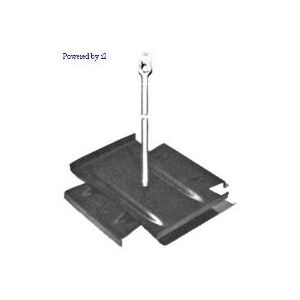
- Prepare the site for installation by clearing rocks, vegetation and debris where the anchor will install.
- Dig a hole in the ground to the required depth and diameter for the anchor. The dimensions of the hole will depend on the size and design of the anchor and the soil conditions.
- Place the cross-plate anchor into the hole ensuring it positions and horizontally in a manner. This is to allow the guy wire to install to the desired angle and direction.
- Backfill the hole with soil or a suitable compacting material around the anchor plate. Add the soil in layers to ensure stability and eliminate air pockets.
- Attach the guy wire to the cross-plate anchor following the manufacturer’s instructions. This involves threading the guy wire through the holes in the anchor plate and secure using fastening hardware.
- Inspect the anchor, guy wire and surrounding area to ensure everything is secure and properly installed. Inspect for movement, loose hardware or other factors that affect the stability of the anchor.
Choosing the best cross plate anchor
Cross plate anchors should be able to provide stability, load capacity and long-term performance for your project. Some manufacturers in the market provide guidelines on the best cross plate to use for your applications. it is advisable to consult with experts in the industry for guidance during the selection process. Below are the various factors to consider when selecting the best cross plate anchors.
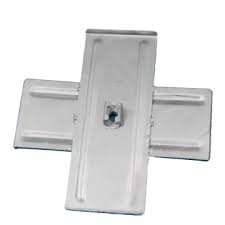
- Assess the soil conditions at the installation site considering factors like soil composition, stability and potential for movement to determine the appropriate anchor type for your soil conditions.
- Determine the expected load or tension that the anchor will need to withstand. Consider the weight and forces exerted by the support structure and environmental factors.
- Consider the different types of cross plate anchors available since each design has its own design and different applications and soil conditions.
- Review the manufacturer’s specifications, guidelines and product documentation for the cross plate anchors you are considering. The anchors should meet the industry standards and the required load capacities.
- Evaluate the installation process and equipment needed for each anchor type by considering factors like ease of installation, required equipment or tools and time efficiency.
- Consider the cost effectiveness of the cross-plate anchors including the anchor itself, installation equipment and any additional materials or labor required
- Consult with a qualified engineer or anchor specialist who can provide expertise and guidance based on their experience.
Frequently asked questions
What are cross plate anchors used on overhead transmission lines?
A cross pate anchor is a type of anchor that secures the guy wires that support the poles of the transmission line. They work at the base of these guy wires to provide a secure attachment point to the ground.
What are the components of the cross-plate anchors?
The components of the crossplate anchor work together to ensure security and stability of the structures. They include plate, holes, rod or shaft, blades and attachment hardware.
What are the benefits of using cross plate anchors?
Crossplate anchors provide several benefits that make them suitable for different applications. They include stability and load capacity, cost effectiveness, easy installation, durability and reusability.
What are the limitations of using cross plate anchors?
They also have various limitations to consider when selecting them for your applications. These include soil stability, depth limitations, installation challenges, environmental considerations and maintenance.
